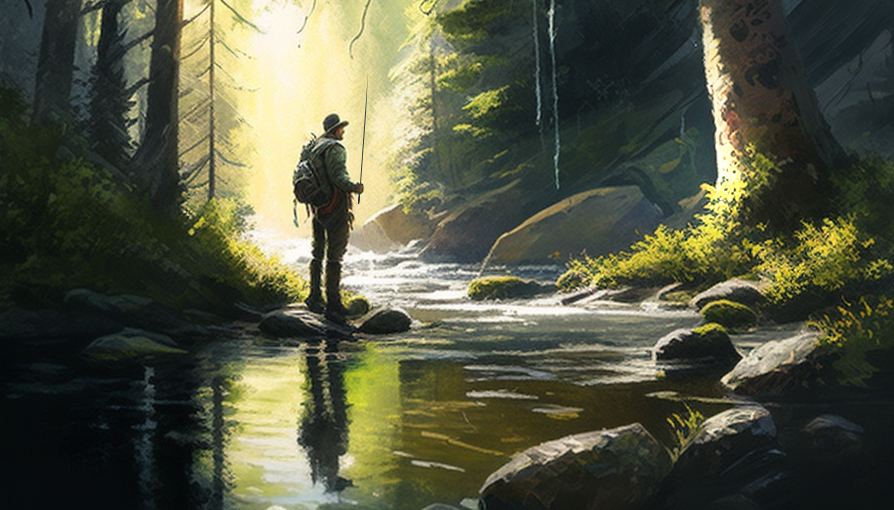Vermont is an angler’s paradise, offering some of the best fly fishing spots in the United States. The state boasts numerous rivers, streams, and lakes that are home to an array of fish species, including trout, salmon, bass, and pike. Whether you’re a beginner or a seasoned angler, Vermont has something to offer for everyone.
Experience the Thrill of Fly Fishing in Vermont: 10 Must-Visit Spots
10. Battenkill River: The Battenkill River is one of Vermont’s most famous fly fishing spots. It’s home to brown and rainbow trout and offers excellent fishing from April to October.
9. Winooski River: The Winooski River is another popular fly fishing spot that’s known for its trophy-sized trout. The river is accessible year-round, but the best time to fish is from April to June.
8. Dog River: The Dog River is a small stream that’s home to brook and brown trout. It’s an excellent spot for beginners and is accessible from May to October.
7. Otter Creek: Otter Creek is a large river that runs through central Vermont. It’s home to brown and rainbow trout and is accessible year-round.
6. Lake Champlain: Lake Champlain is a massive lake that’s home to a variety of fish species, including bass, pike, and salmon. It’s accessible year-round, but the best time to fish is from May to October.
5. White River: The White River is a beautiful stream that’s home to brown and rainbow trout. It’s accessible from April to October and offers excellent fishing throughout the season.
4. Mettawee River: The Mettawee River is a small stream that’s home to brook and brown trout. It’s an excellent spot for beginners and is accessible from May to October.
3. Black River: The Black River is a medium-sized river that’s home to brown and rainbow trout. It’s accessible year-round, but the best time to fish is from April to October.
2. Missisquoi River: The Missisquoi River is a large river that’s home to smallmouth bass, northern pike, and walleye. It’s accessible year-round, but the best time to fish is from May to October.
1. Connecticut River: The Connecticut River is a massive river that runs through multiple states, including Vermont. It’s home to a variety of fish species, including trout, bass, pike, and salmon. It’s accessible year-round, but the best time to fish depends on the species you’re targeting.
Don’t forget to check the local regulations and restrictions as there are some areas that are off-limits for fishing.
Useful Tips and Interesting Facts
Vermont has strict regulations regarding the use of lead in fishing gear. Make sure you use non-toxic alternatives to avoid harming the environment and wildlife.
Vermont’s rivers and streams are often surrounded by beautiful scenery, making fly fishing a relaxing and enjoyable experience.
Vermont’s state fish is the brook trout, which is native to the state and can be found in many of its rivers and streams.
Many of Vermont’s fly fishing spots are located near charming towns and villages, offering visitors an opportunity to explore the local culture and history.
Beginner’s Guide to Fly Fishing in Vermont
If you’re new to fly fishing, Vermont is an excellent place to start. Here are a few things you need to know before you hit the water:
Get a Fishing License: Before you start fishing, make sure you have a valid fishing license. You can purchase a license online or at a local sporting goods store.
Know the Fishing Regulations: Familiarize yourself with the fishing regulations for the area you plan to fish. These regulations can vary depending on the water body, fish species, and time of year.
Learn to Cast: Practice your casting skills before you hit the water. There are many online tutorials and classes available to help you learn the basics.
Dress Appropriately: Dress in layers and wear waders if you plan to fish in colder water. It’s also a good idea to wear a hat and polarized sunglasses to protect your eyes from the sun.
Professional Guide to Fly Fishing in Vermont
If you’re an experienced angler looking for a challenge, Vermont has plenty of advanced fishing spots that require skill and expertise. Here are a few things to keep in mind:
Research the Area: Do your research and study the fishing conditions of the area you plan to fish. This includes water temperature, water flow, and fish behavior.
Use the Right Gear: Make sure you have the right gear for the type of fish you plan to catch. This includes the right rod, reel, line, and flies.
Be Patient: Fly fishing requires patience and persistence. Don’t get discouraged if you don’t catch anything right away.
Practice Catch and Release: Vermont has strict regulations regarding catch and release. Make sure you know the rules and practice responsible fishing.
In conclusion, Vermont offers some of the best fly fishing spots in the United States, attracting anglers from all over the country. From small streams to large rivers and lakes, Vermont has something to offer for everyone. Whether you’re a beginner or a professional, make sure you follow the rules and regulations, and practice responsible fishing. With the right gear, knowledge, and patience, you’re sure to have a memorable fly fishing experience in Vermont.
